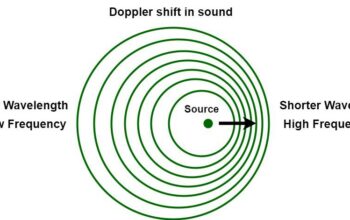The concept of fusion—both as a scientific marvel and a metaphorical ideal—evokes images of cosmic elements converging in an intricate dance, ultimately giving rise to unparalleled energy and innovation. In the realm of physics, fusion refers to the process by which two atomic nuclei combine to form a heavier nucleus, releasing vast quantities of energy in the process. This physical phenomenon is not merely an abstract concept; it embodies humanity’s relentless pursuit of knowledge and power. The metaphor of fusion on a collision course outlines a journey fraught with obstacles yet filled with promise, compelling us to examine whether we can indeed harness the immense potential nestled within the core of matter and, by extension, our own aspirations.
At the heart of this endeavor lies the sun, the quintessential fusion reactor, where hydrogen atoms amalgamate under extreme pressure and temperature to forge helium—an ethereal prototype for what humanity endeavors to replicate on Earth. The sun’s core, a crucible of thermonuclear reactions, serves as a testament to nature’s grandeur. Our ambitions to recreate this process are steeped in urgency, driven by the need for sustainable energy solutions in an era characterized by environmental degradation and dwindling fossil fuel reserves. The interplay of fusion energy and human progress evokes an undeniable allure as we stand on the precipice of a new age.
Understanding the fundamental principles of nuclear fusion necessitates a foray into the realm of plasma physics. Plasma, often dubbed the fourth state of matter, is a soup of charged particles; it constitutes the dominant form of matter in the universe, outstripping solid, liquid, and gaseous states. For fusion to occur, atoms must be brought to sufficiently high energies to overcome their natural electrostatic repulsion—a feat achieved through immense pressure and temperatures akin to those found within stellar cores. The magnetic confinement approach, exemplified by devices such as tokamaks, seeks to ensnare plasma using magnetic fields, creating a controlled environment in which fusion can occur.
However, this noble ambition is fraught with complexities. The fundamental challenge lies in the quest for breakeven—the point at which the energy produced from fusion equals the energy expended to initiate and sustain the reaction. While notable advances such as ITER project have propelled the dialogue surrounding fusion forward, one must grapple with the intricate challenges of stability, confinement, and energy extraction. The frenzied oscillation of plasma has proven to be an adversary to sustained fusion; indeed, controlling the chaotic dance of particles poses a formidable scientific riddle.
Yet, the pursuit of fusion presents not just technical difficulties but also philosophical inquiries. What does it mean to reach the core of energy itself? The metaphor extends beyond the physical realm and into the conceptual landscape. The core symbolizes not merely a source of power but a wellspring of knowledge, resilience, and ingenuity. Our quest for fusion encapsulates a longing to penetrate the very fabric of existence, to decode the algorithms that govern the cosmos while grappling with the ethical implications inherent in wielding such power.
Modern humanity stands amidst an epoch marked by quantum leaps in innovation, and the pursuit of fusion energy serves as both a hopeful beacon and a formidable reminder of our limitations. Should we succeed, the implications would be staggering: an inexhaustible and clean energy source capable of sparking a renaissance in human conflict-solutions and sustainability efforts. Conversely, the question of whether we are morally and ethically equipped to handle the fruits of this undertaking looms large. Will the tantalizing prospects of boundless energy lead to equitable access, or could they precipitate new forms of imperialism and environmental exploitation?
In addition to its scientific and philosophical dimensions, the pursuit of fusion energy contributes to an evolving narrative of collective human endeavor. Fusion represents a collaborative tapestry woven from threads of international partnerships, scientific inquiry, and economic investment. Institutions across the globe, from research laboratories to governmental agencies, engage in a grand experiment of intellectual synergy. The triumphs and tribulations associated with these collaborations underline the essence of humanity—a communal pursuit, an intricate collision course that embraces the collective spirit of inquiry.
The journey towards achieving practical fusion energy mirrors the trials of venturing into the deep ocean or ascending the most venerable peaks; it is laden with uncertainty, yet fertile with possibility. In light of this, the inflection point may not solely reside in our technical competence but rather in our ability to envision a world replete with harmonious coexistence—one that prioritizes collaborative solution-making toward our most pressing challenges.
In contemplating our trajectory, one must consider fusion not merely as a scientific endeavor but as a profound reflection of our human condition—a quest to understand the core of existence and to imagine a future suffused with hope, unity, and resilience. The dawn of fusion energy could potentially illuminate paths toward a sustainable future, but only if we navigate the delicate balance of ethics, equity, and responsibility that accompanies such formidable power. Thus, as we proceed on this collision course with fusion, one must ask: will we reach the core, not only of energy but of our shared humanity? The resolution of this question remains elusive, imbued with the promise of exploration yet bound by the intricacies of ethical stewardship. The confluence of scientific aspiration and social considerations encapsulates the true essence of this endeavor, as we delicately balance the intricate interplay of knowledge and power in the pursuit of the ultimate fusion.










